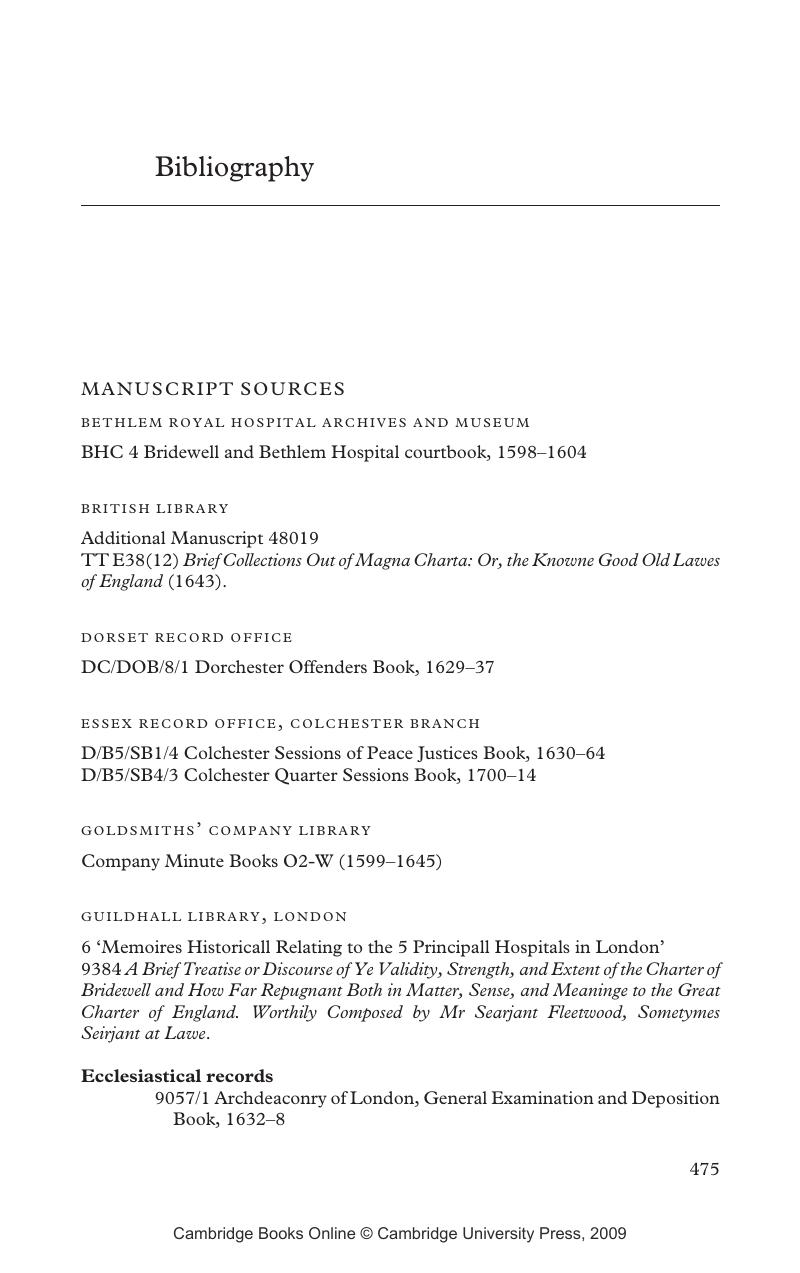Bibliography
Published online by Cambridge University Press: 15 December 2009
Summary

- Type
- Chapter
- Information
- Lost LondonsChange, Crime, and Control in the Capital City, 1550–1660, pp. 475 - 513Publisher: Cambridge University PressPrint publication year: 2008

